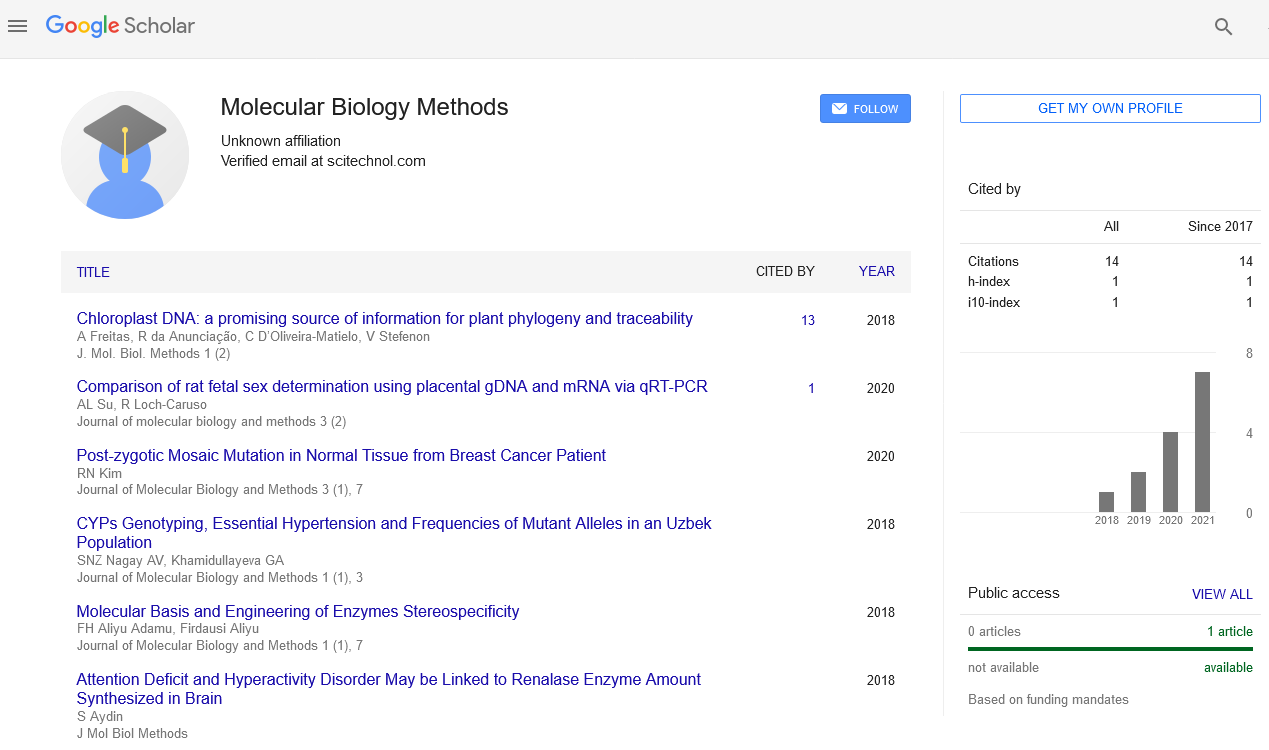Perspective, J Mol Biol Methods Vol: 6 Issue: 1
Exploring the Potential of Genetic Engineering and Its Applications
Faisal Hussain*
1Department of Biotechnology and Biomedicine, Technical University of Denmark, Kongens Lyngby, Denmark
*Corresponding Author: Faisal Hussain
Department of Biotechnology and Biomedicine, Technical University of Denmark, Kongens Lyngby, Denmark
E-mail: faisalhussn@kon22.de
Received date: 20 February, 2023, Manuscript No. JMBM-23-92946;
Editor assigned date: 22 February, 2023, PreQC No. JMBM-23-92946 (PQ);
Reviewed date: 09 March, 2023, QC No JMBM-23-92946;
Revised date: 16 March, 2023, Manuscript No. JMBM-23-92946(R);
Published date: 23 March, 2023, DOI: 10.4172/JMBM.1000123
Citation: Hussain F (2023) Exploring the Potential of Genetic Engineering and Its Applications. J Mol Biol Methods 6:1.
Description
Genetic engineering is the process of modifying an organism's DNA, either by adding new genes or changing existing ones. This can be accomplished in a variety of ways, including the incorporation of new genetic material into an organism's DNA through bacteria, viruses, or other vectors. Another way is to use CRISPR-Cas9 technology, which allows to modify specific genes by cutting and splicing DNA. The manipulation of organisms' genetic makeup to produce a desired effect is known as genetic engineering. This can be accomplished through a variety of methods, including gene editing, gene insertion, and gene deletion. Genetic engineering has numerous potential applications, including in agriculture, health, and environmental science. Genetic engineering can be applied in agriculture to generate crops that are more resistant to pests, drought, and other environmental challenges. It can also be used to grow crops that have more nutritional value or have a longer shelf life. Gene therapy, which includes inserting new genetic material into a patient's cells to treat or cure hereditary illnesses, is one of the most promising fields of genetic engineering. This method has already been used to treat a variety of illnesses, including inherited blindness, immunological problems, and certain cancers. However, gene therapy presents ethical problems about informed consent, patient privacy, and the possibility of unintended consequences.
Applications of genetic engineering
Many theoretical and practical aspects of gene function and organisation have been advanced through genetic engineering.
Bacteria capable of synthesising human insulin, human growth hormone, alpha interferon, a hepatitis B vaccine, and other therapeutically valuable compounds have been produced using recombinant DNA technology. Plants can be genetically modified to fix nitrogen, and genetic illness can be treated by replacing faulty genes with normally functioning genes.
Several plant species, such as corn and cotton, have been genetically modified to produce toxins that kill insects. Crop plants have also been given bacterial genes that confer resistance to herbicides. Other attempts at genetically altering plants have been made to increase the plant's nutritional value. Agriculture is one of the most significant fields in which genetic engineering is used. Crops' genetic makeup can be changed to produce plants with longer shelf lives, reduced water needs, and increased resistance to pests and diseases. Additionally, genetic engineering has the potential to transform medical practice.
For example, they can generate genetically engineered immune cells that are more capable of targeting and destroying cancer cells. They can also create genetically engineered viruses capable of infecting and killing microorganisms. Environmental issues like pollution and climate change can also be addressed with genetic engineering. Developing genetically modified plants, for example, that can absorb more carbon dioxide from the environment Aside from these applications, genetic engineering has been used to make industrial enzymes, such as those used in laundry detergents, and new materials, such as biodegradable polymers. These applications have the ability to minimise our dependency on non-renewable resources while also producing more sustainable and environmentally friendly products.
Conclusion
Genetic engineering is a powerful technology that has the potential to revolutionise the way to produce food, cure diseases, and address environmental challenges. However, in order to ensure that this technology helps society as a whole, it must be used responsibly, with careful evaluation of the potential benefits and risks. Despite the potential benefits of genetic engineering, there are certain ethical problems. For example, there is a risk of producing "designer babies" with specific physical or intellectual characteristics. There is also the possibility that genetic changes will spread to other creatures through crossbreeding or horizontal gene transfer. Furthermore, there is concern that genetic engineering could be exploited to develop bioweapons or other harmful species.
 Spanish
Spanish  Chinese
Chinese  Russian
Russian  German
German  French
French  Japanese
Japanese  Portuguese
Portuguese  Hindi
Hindi 